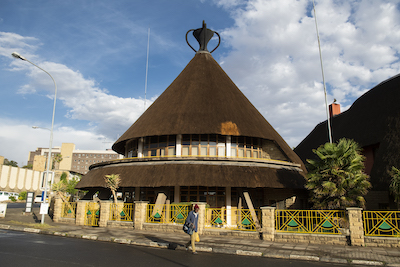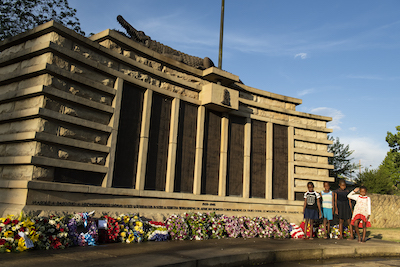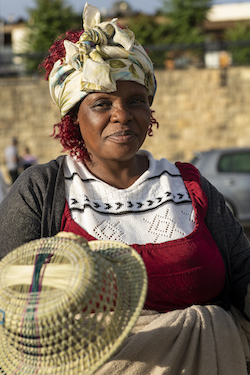
You are here: Explore > Places to Visit > Maseru
Flanked by the Caledon River as it flows along the border with South Africa, Maseru is not only the capital of Lesotho, but also the kingdom’s largest city, and the main port of entry for those arriving by air or by road from the west.
 Relatively low-lying at around 1,600 metres above sea level, Maseru has a pleasant temperate climate, and it experiences less harsh winters than the majestic highlands to its east. The city’s seSotho name alludes to the red sandstone escarpments that dominate the surrounding countryside, as showcased in such evocatively shaped natural outcrops as the Lion’s Head and Lancer’s Gap, as well as Mount Qiloane, a striking conical protuberance that inspired the design of the traditional Basotho mokorotlo straw hat.
Relatively low-lying at around 1,600 metres above sea level, Maseru has a pleasant temperate climate, and it experiences less harsh winters than the majestic highlands to its east. The city’s seSotho name alludes to the red sandstone escarpments that dominate the surrounding countryside, as showcased in such evocatively shaped natural outcrops as the Lion’s Head and Lancer’s Gap, as well as Mount Qiloane, a striking conical protuberance that inspired the design of the traditional Basotho mokorotlo straw hat.
 Maseru ranks among the older towns in the Southern African interior. It was founded by the British in 1869 as the administrative centre of what was then the newly acquired colony of Basutoland. Following the death of King Moshoeshoe I in 1870, Maseru quickly outgrew the old royal capital at nearby Thaba Bosiu to become the most important market town and business centre in the kingdom, a role it retains to this day.
Maseru ranks among the older towns in the Southern African interior. It was founded by the British in 1869 as the administrative centre of what was then the newly acquired colony of Basutoland. Following the death of King Moshoeshoe I in 1870, Maseru quickly outgrew the old royal capital at nearby Thaba Bosiu to become the most important market town and business centre in the kingdom, a role it retains to this day.
The compact and manageable city centre, easily explored on foot, is studded with charming sandstone edifices dating from the earliest days. These include the former Resident Commissioner’s House, an imposing Roman Catholic Cathedral, a more modest disused Anglican church, and an adjacent cluster of buildings that now houses the Alliance Française and associated Ooh La La garden cafe.
 Another famous central landmark is the thatch-roofed Mokorotlo Building, which is designed to resemble the traditional Basotho Hat for which it is named. This striking building now houses a craft shop showcasing the work of the highly regarded Lesotho Handicraft Cooperative.
Another famous central landmark is the thatch-roofed Mokorotlo Building, which is designed to resemble the traditional Basotho Hat for which it is named. This striking building now houses a craft shop showcasing the work of the highly regarded Lesotho Handicraft Cooperative.
An excellent selection of modern hotels and guesthouses, international restaurants, and well-equipped shopping malls make Maseru a useful base for exploring the many attractions that garnish the surrounding countryside. Popular day tripping destinations include King Moshoeshoe I’s 19th-century mountaintop capital at Thaba Bosiu, the compelling prehistoric rock art site of Ha Baroana, the unique Ha Kome Cave Dwellings, the handicraft cooperatives in Teya-Teyaneng, the Subeng Dinosaur Footprints near Leribe, and the historic mission towns of Morija and Roma.
Sleeping: Maseru offers the best selection of accommodation in Lesotho, ranging from five-start business and cosy boutique hotels to budget-friendly guesthouses and backpackers.
Eating: Maseru’s cosmopolitan selection of dining out options includes good Italian, Chinese and Indian restaurants, as well as several fast food franchises that will be familiar to visitors coming from South Africa. An excellent selection of supermarkets offers self-caterers the opportunity to stock up before they explore the kingdom further.
Transport: International flights to Lesotho all land at Moshoeshoe I International Airport, which lies about 20km southeast of Maseru. By road, the city lies around 150km east of Bloemfontein (capital of South Africa’s Free State province) along the N8, and it is the kingdom’s main road and public hub.


